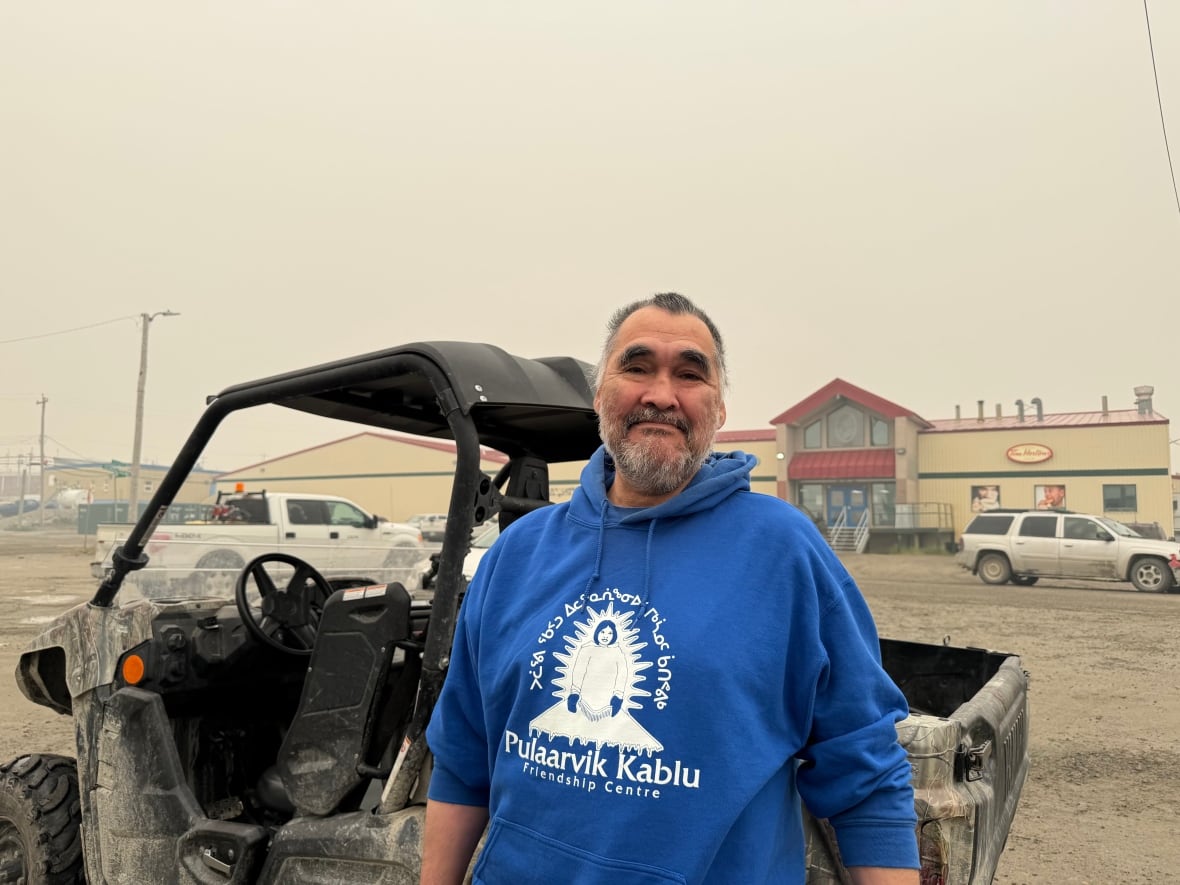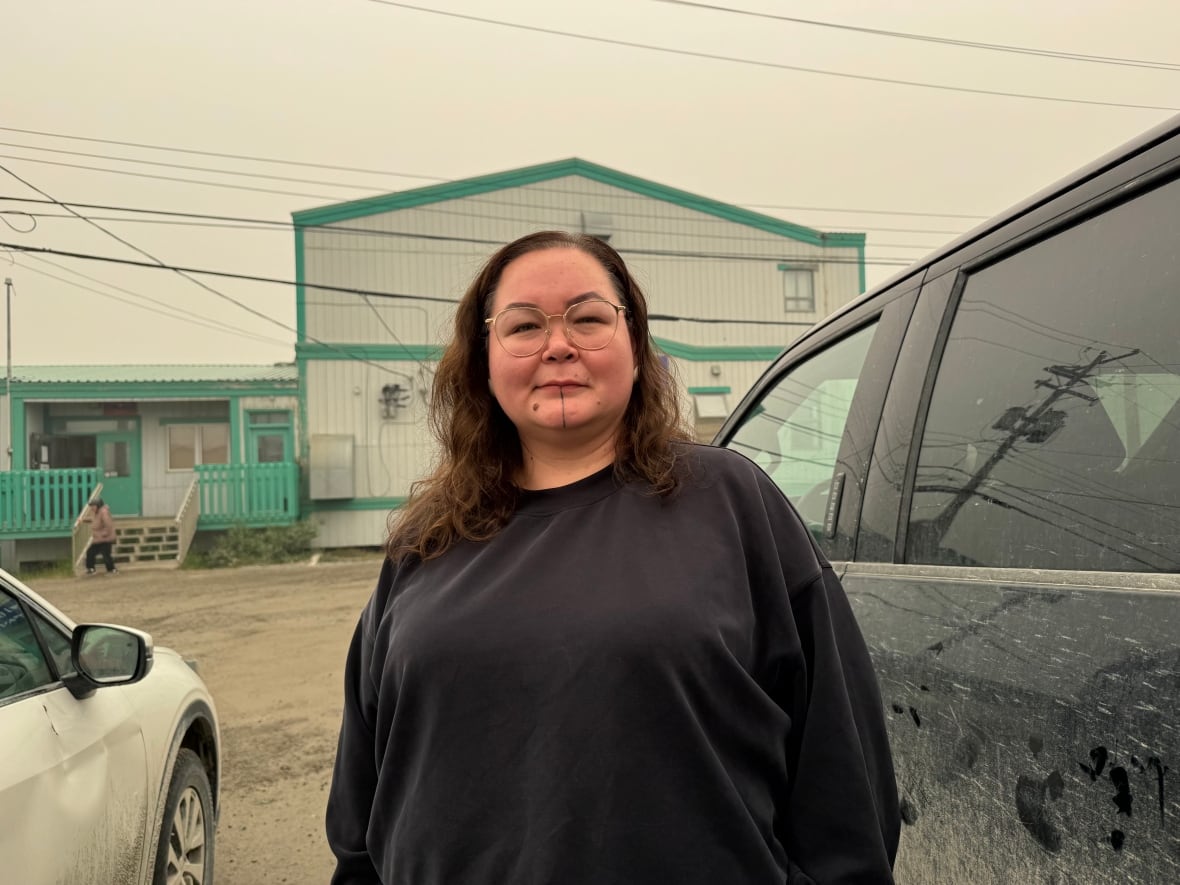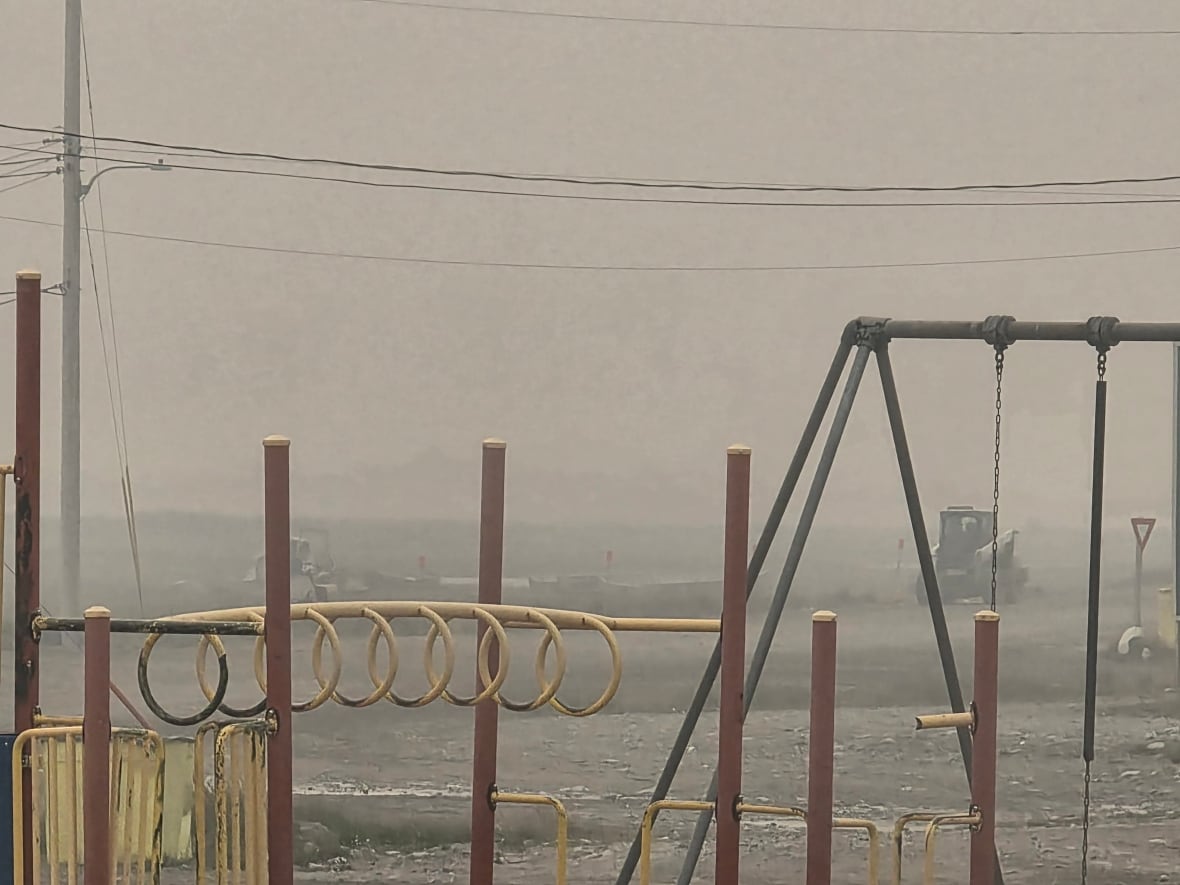Air quality warning in place as wildfire smoke blankets Nunavut's Kivalliq region
Smoke is coming from wildfires in Manitoba and Saskatchewan

An air quality warning is in effect in Nunavut's Kivalliq region as smoke from wildfires in Manitoba and Saskatchewan blankets much of area on Tuesday.
"I've never seen something like this in my life," said Patrick Karlik, a Rankin Inlet resident.
Poor air quality and reduced visibility are expected for several communities, including Rankin Inlet, Chesterfield Inlet, Whale Cove, Baker Lake and Arviat.
"Visibility is really lowest at this point in the Arviat area," said Environment and Climate Change Canada meteorologist Brian Proctor. "So that's where the smoke concentrations are highest. [It's] a little improved up into the Baker Lake area."

Mayor of Baker Lake, James Taipana, says he hasn't seen smoke conditions like this in years, but residents don't have many options for dealing with the smoke.
"There's not [many places] where we can actually go, [we] just wait it out," he said.
Olivia Tagalik described the conditions in Rankin Inlet as hazy with a "very strong smell."
"I can't imagine what it's like in Manitoba if it's like this here," she said.

Proctor says widespread and largely out-of-control wildfires in northern Saskatchewan and north and central Manitoba are causing smoke plumes in the Kivalliq.
"It's fires in and around the Flin Flon and Creighton and Thompson [Manitoba] to a large degree that are coming up and causing the biggest problems," he said. "But we're seeing very active forest fires further west in Saskatchewan."
Conditions expected to improve Wednesday
Proctor said Tuesday that he expected that smoke conditions would improve over the next 12 to 18 hours as smoke plumes move east toward Hudson Bay and Baffin Island. That means communities on Baffin Island could see smoky conditions overnight Tuesday, with conditions improving Wednesday morning.
"We're not looking for [smoke conditions] to be as bad as the Arviat and Rankin areas and also sort of Chesterfield Inlet areas. So it's going to be bad, but it won't be as bad," he said.

Proctor says the effects of wildfire smoke depend on the individual, but he recommends staying indoors away from the smoke whenever possible.
"Try to limit your exposure to the smoke, but you need to stay relatively cool and hydrated," he said. "Look for community centres, nursing stations, things of that nature that may have a bit better ventilation systems in place."
Though the smoky conditions are expected to improve across Nunavut by Wednesday, Proctor says the wildfire season is far from over.
"It's remaining warm, remaining fairly dry…. And until we see some moisture coming in and cool those temperatures down, it's not likely going to get any better."
With files from TJ Dhir and Selma Eccles.